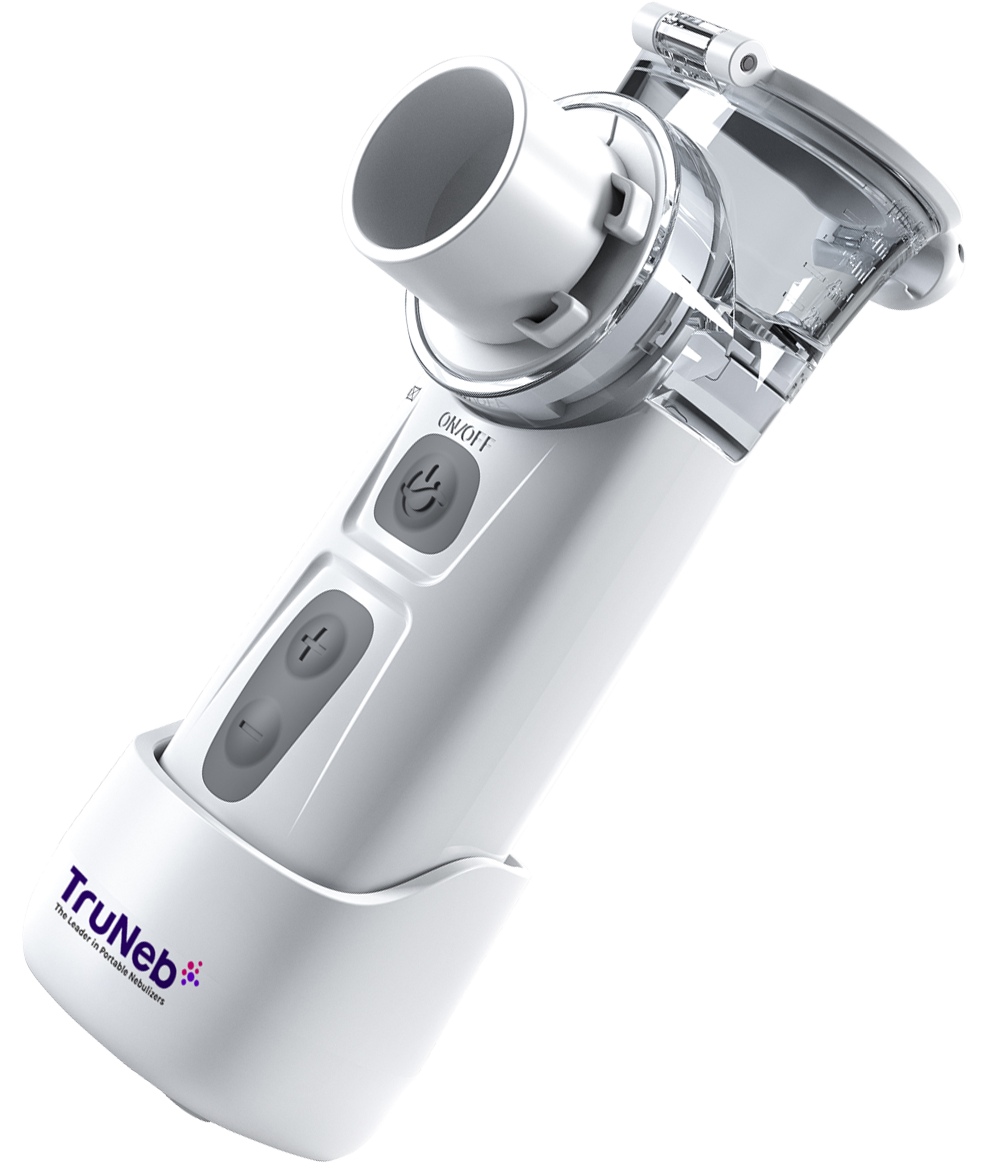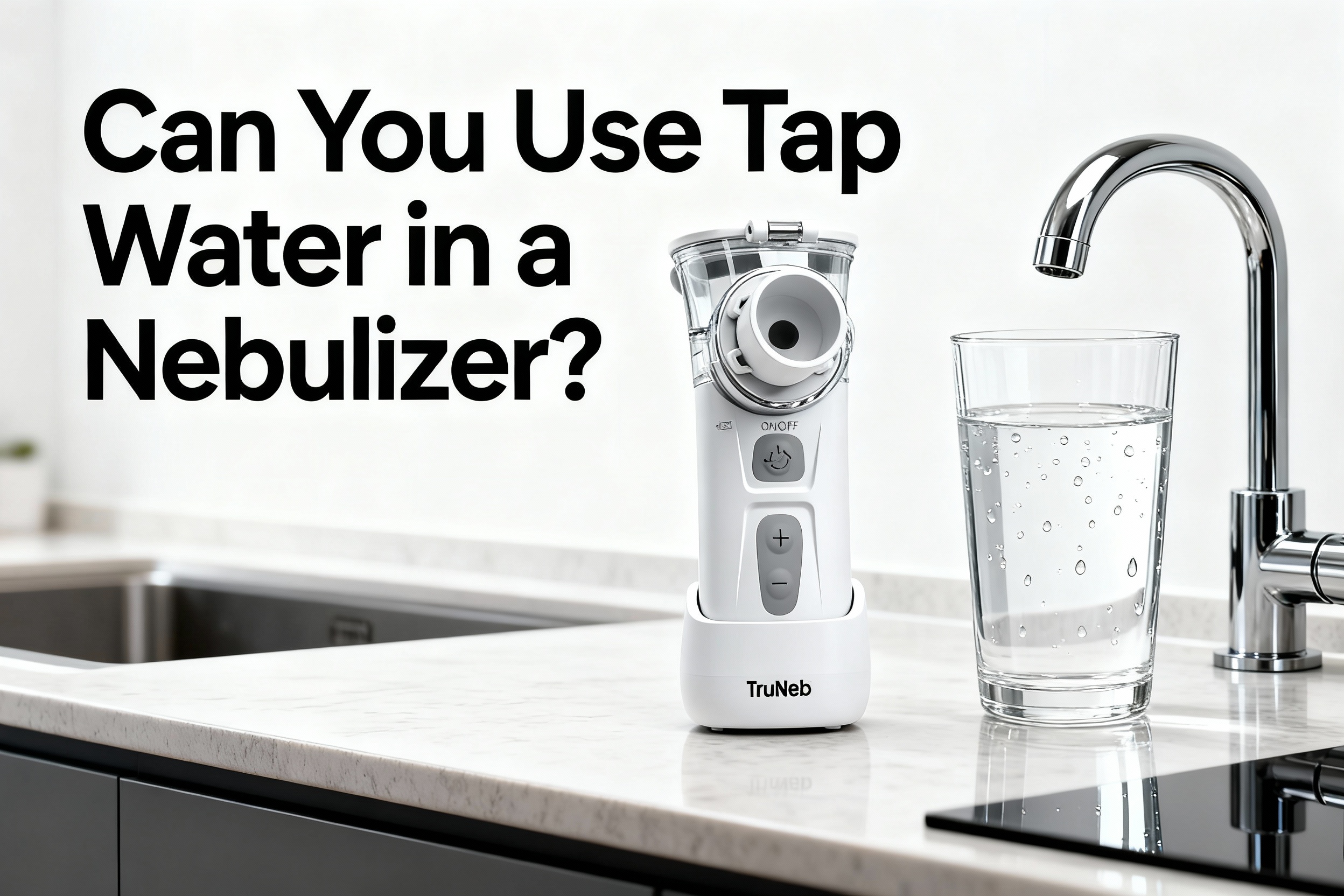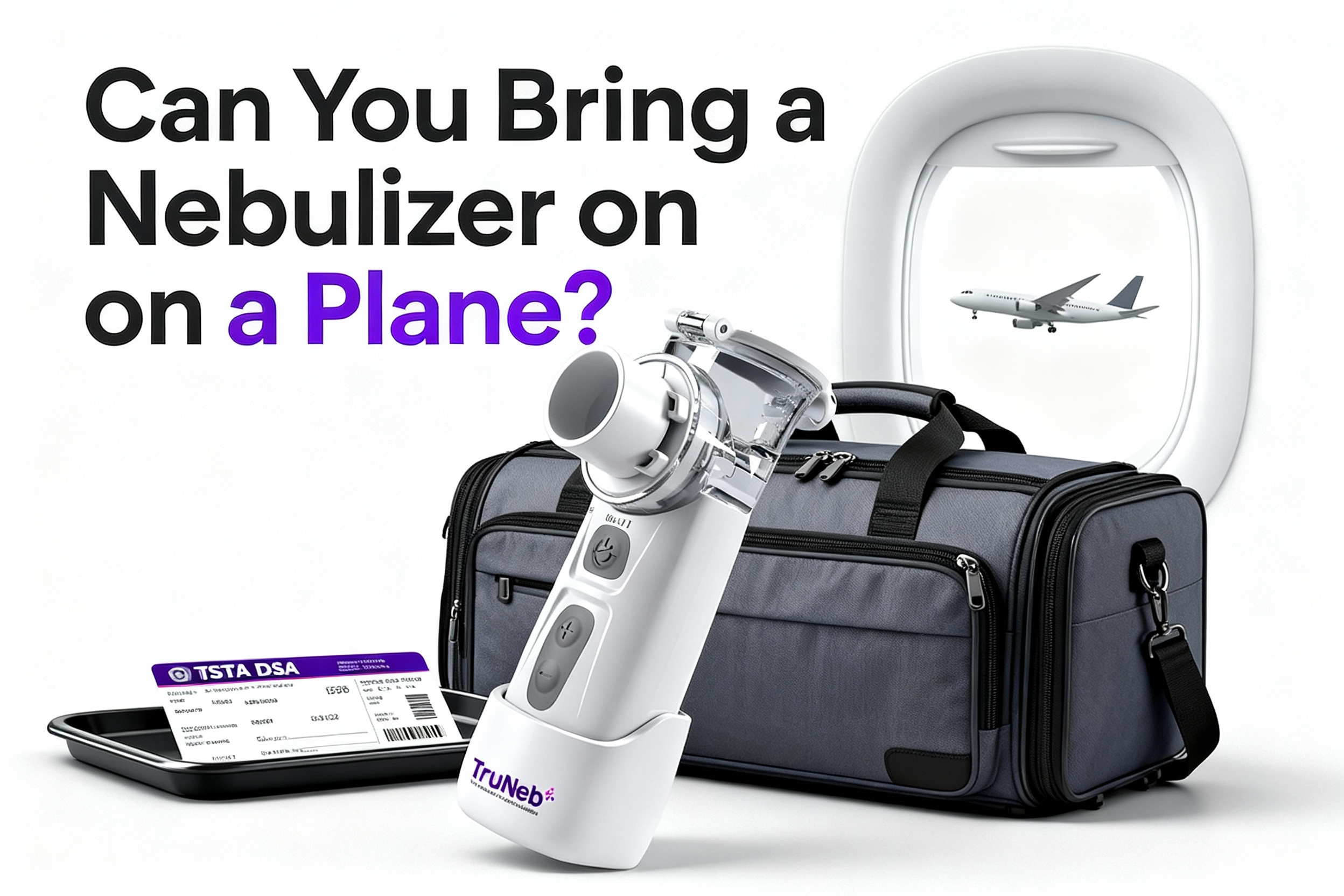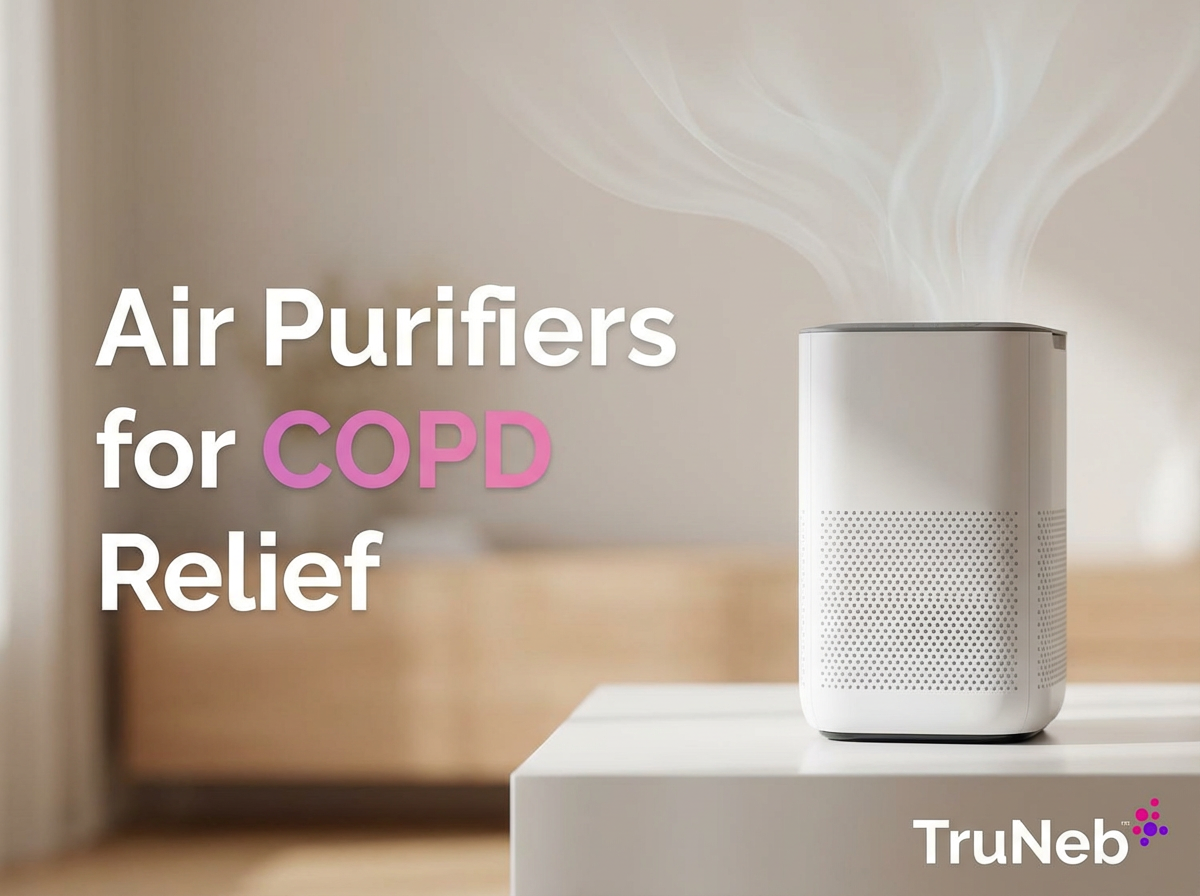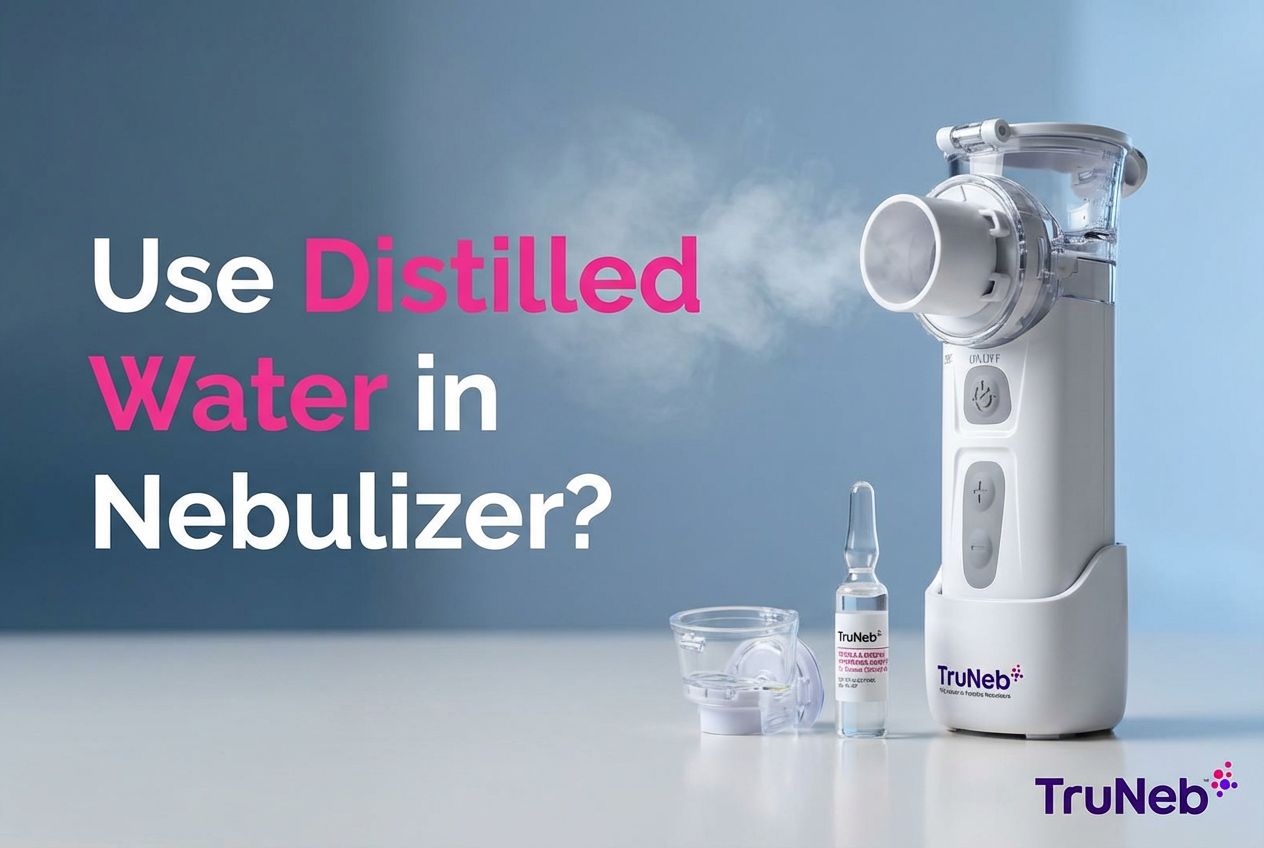On this page
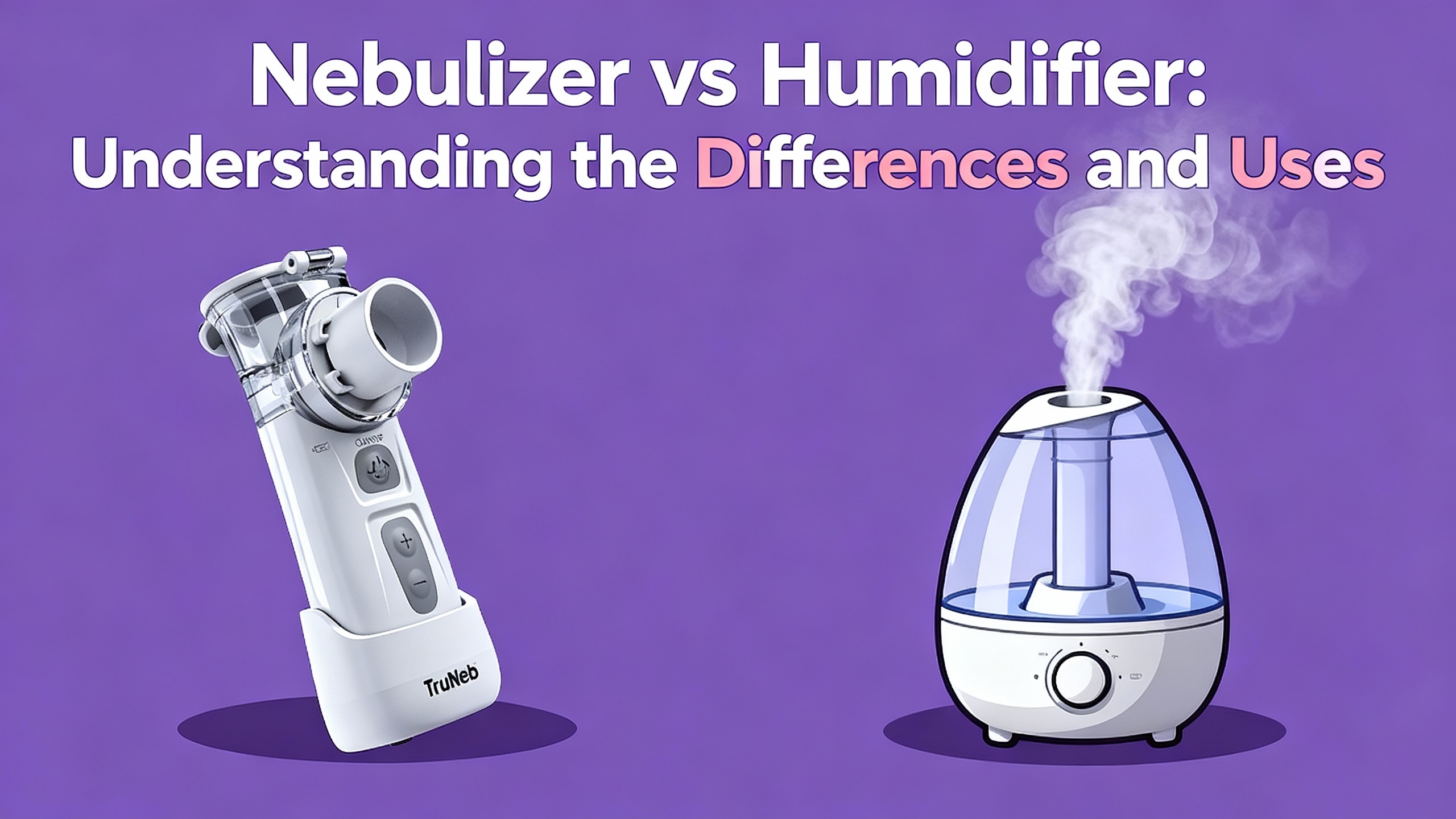
The simple difference: a nebulizer sends medicated mist straight into your lungs, while a humidifier adds moisture to the air around you. If you're deciding between the two, the key difference between a nebulizer and a humidifier is medication vs moisture. They help in different ways and aren’t interchangeable.
What Is a Nebulizer and How Does It Work?
A nebulizer is a medical device that turns liquid medication into a fine mist you breathe in through a mask or mouthpiece. It helps medicine reach deep into your lungs.
Delivers aerosolized medication directly to the lungs via a mask or mouthpiece. Common solutions include albuterol, ipratropium, budesonide, or sterile saline. Types include jet (compressor), ultrasonic, and vibrating mesh.
How it works in plain terms:
- A small cup holds your medication (for example, albuterol or saline).
- The machine uses compressed air, ultrasonic waves, or a vibrating mesh to create a breathable mist.
- You sit and breathe slowly until the cup is empty.
Doctors prescribe nebulizers for asthma, COPD, cystic fibrosis, or bronchitis with wheezing.
One-liner: A nebulizer is for treatment, not room comfort.
What Is a Humidifier and How Does It Work?
A humidifier is a home appliance that adds moisture to dry indoor air. This can help ease dry throat, stuffy noses, and coughing from dry air.
Key types:
- Cool-mist (evaporative or ultrasonic): releases room‑temperature mist.
- Warm-mist vaporizer: boils water to make steam.
Humidifiers can help during colds, flu season, or winter heat. They don’t deliver medication and won’t treat an asthma attack. You might see products or boxes labeled 'steam inhaler' — these are NOT nebulizers and aren’t for breathing prescription medications.
One-liner: A humidifier is for comfort, not drug delivery.
Humidifier vs Vaporizer (Warm Mist)
A vaporizer is a type of humidifier that heats water to make steam. Warm steam can feel soothing, but hot water can burn skin. For kids, pediatric groups usually prefer cool-mist humidifiers for safety.
Here’s how a vaporizer fits into nebulizer vs vaporizer vs humidifier comparisons: a vaporizer is a warm-mist humidifier that adds steam to the room and doesn’t deliver medication.
One-liner: A vaporizer is a warm‑mist humidifier — it adds steam to the room but doesn’t deliver medication.
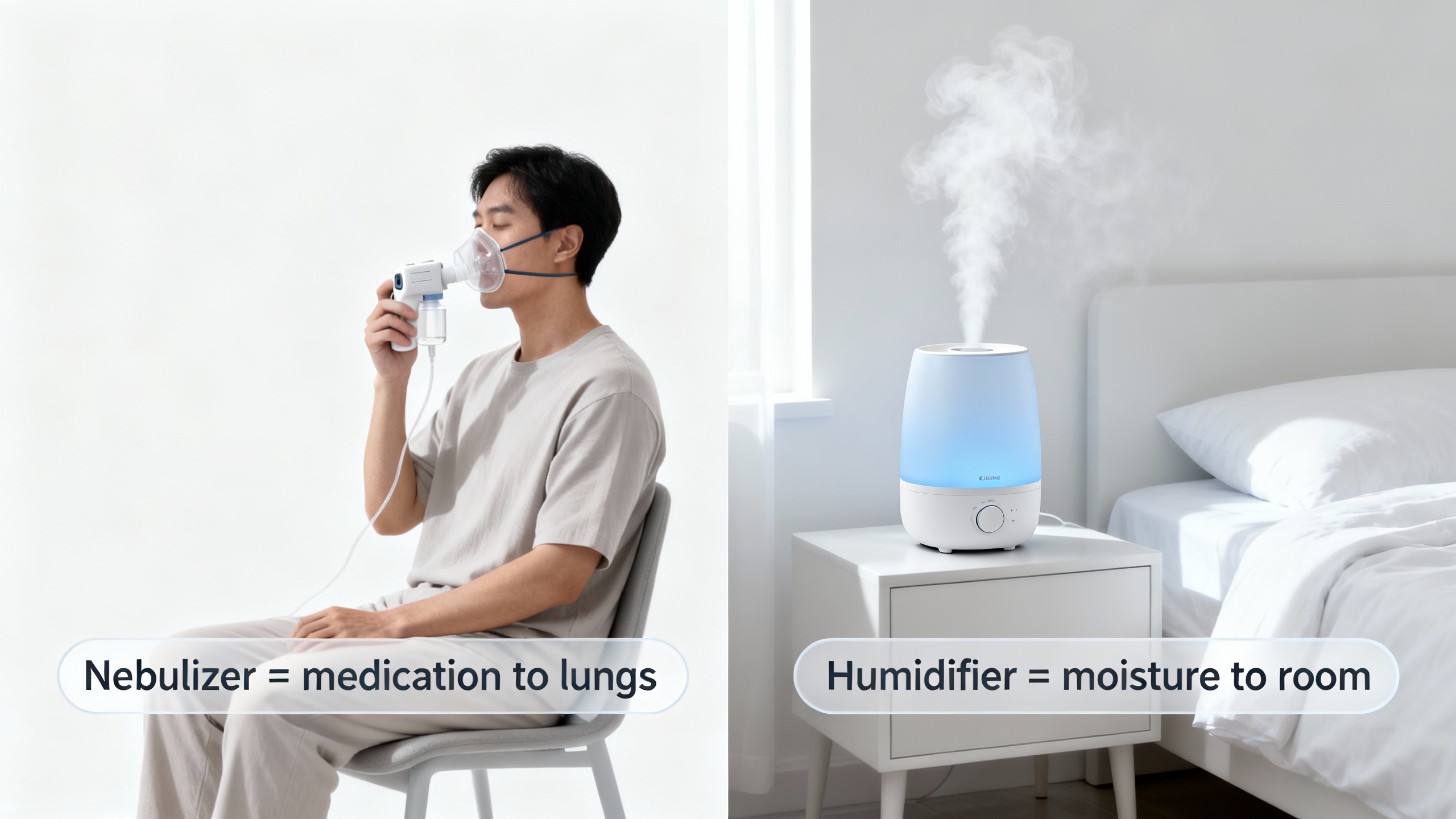
| Feature | Nebulizer | Humidifier | Vaporizer (warm‑mist) |
|---|---|---|---|
| Purpose | Deliver medication as inhaled mist | Add moisture to room air | Add warm steam to room air |
| Output | Medicated aerosol via mask/mouthpiece | Cool mist or ultrasonic moisture | Heated steam from boiled water |
| Prescription meds? | Yes — uses prescribed solutions | No — water only | No — water only |
| Typical use | Asthma, COPD, wheezing, cystic fibrosis | Dry air, colds, congestion, dry throat | Same as humidifier; prefers warm steam |
| Area of effect | Direct to the lungs | Entire room | Entire room |
| Needs prescription? | Medication does; device may for coverage | No | No |
| Maintenance focus | Clean/disinfect parts after use | Empty/rinse tank; deep clean regularly | Same as humidifier; descale heater |
| Safety notes | Use only prescribed solutions | Avoid mold; keep humidity ~30–50% | Burn risk from hot water/steam |
| Cost (typical) | ~$50–$150 device; meds extra | ~$30–$100 | ~$30–$80 |
* Prescriptions apply to medications; device coverage varies by plan. † Aim for 30–50% indoor humidity to avoid mold and dust mites.
When to Use Each Device
One-liner: Use humidity for comfort; use a nebulizer when medication is needed.
For Coughs, Colds, and Congestion
- For most colds and dry coughs, a cool‑mist humidifier can help loosen mucus and soothe a scratchy throat.
- If cough comes with wheezing or tightness and your doctor prescribes medicine (like albuterol), a nebulizer can help open airways when prescribed.
- Steam from a shower or vaporizer can give brief relief, but it is not medication.
For Asthma and Chronic Lung Conditions
- Asthma or COPD usually needs medication into the lungs. A nebulizer can deliver bronchodilators or steroids when prescribed.
- A humidifier can reduce airway dryness for some people, but it does not treat an asthma flare.
- Keep indoor humidity in a moderate range (about 30–50%) to avoid mold and dust mite growth.
- One-liner: Asthma and COPD typically need medication to the lungs — that’s a job for a nebulizer.
For Babies and Young Children
- Pediatricians often recommend a cool‑mist humidifier for stuffy noses or croup‑like cough.
- Nebulizers for infants are used only if a doctor prescribes medication or saline.
- Avoid hot steam around children due to burn risk.
- One-liner: Cool‑mist humidifiers are common for baby colds; nebulizers are used only if a doctor prescribes them.
Safety and Maintenance Tips
One-liner: Both devices work best — and safest — when kept clean.
Nebulizer safety
- Clean and air-dry the cup, mask, and mouthpiece after each use.
- Disinfect parts as directed by the manufacturer to prevent germs.
- Only use prescribed solutions. Do not put essential oils or unapproved liquids in a nebulizer.
A portable nebulizer like the TruNeb™ portable mesh nebulizer can make treatments easier on the go, but you still need to clean it as directed.
Humidifier safety
- Empty and rinse the tank daily; deep clean every few days.
- Use distilled water to limit mineral "white dust."
- Keep humidity near 30–50%. If windows fog, turn it down.
- Don’t add essential oils or inhalants unless the manufacturer says it’s safe — most units aren’t designed for oils.
- Keep warm-mist units away from children to prevent burns.
Cost and Access Basics
One-liner: Humidifiers are over-the-counter appliances; nebulizers are medical devices used with prescription medications.
- Humidifiers: widely available in stores and online; many models cost about $30–$100.
- Nebulizers: home units can cost about $50–$150 out of pocket. Devices and medications are sometimes covered by insurance when prescribed.
- Pick based on need: moisture for dry air vs. medication for diagnosed conditions.
Making the Right Choice
- Key takeaway: Nebulizer = medication to lungs; Humidifier/Vaporizer = moisture to room.
- Use a humidifier for comfort during colds or dry seasons.
- Use a nebulizer only with medication as prescribed for conditions like asthma or COPD.
- Some people use both: run a humidifier at night for comfort and use a nebulizer when it’s time for treatment.
⚠️ If you have severe trouble breathing, chest pain, bluish lips/face, or symptoms that rapidly worsen, call emergency services right away.
Talk to your doctor if your symptoms don’t improve or you’re considering changing your treatment.
Frequently Asked Questions
Tap or click a question below to see the answer:
No. A nebulizer delivers medicated mist into your lungs. A humidifier only adds moisture to room air.
For most colds or dry coughs, a humidifier helps with comfort. If your doctor prescribes medication for wheezing or chest tightness, a nebulizer can help when prescribed.
No. Humidifiers aren’t designed to deliver medication and doing so can be unsafe.
Balanced humidity can ease dryness, but it doesn’t treat asthma. Follow your asthma action plan and prescribed inhalers or nebulizer treatments.
Yes. They do different jobs. Use the nebulizer for treatments and the humidifier to keep room air comfortable.
Yes. A vaporizer is a warm‑mist humidifier. It doesn’t deliver medication.

